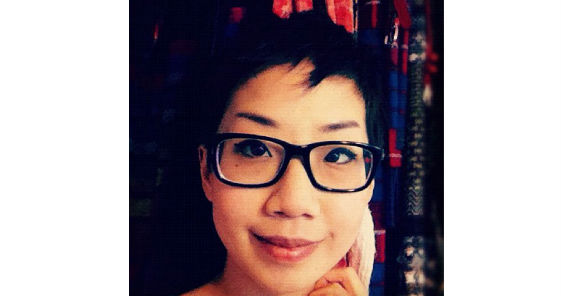MANILA – It almost sounds too good to be true, but ‘official Google doodler’ is an actual job title. After all, the artwork that appears on Google’s home page on special occasions are not conjured out of thin air.
In fact, according to doodler Katy Wu, a Google doodle can take anywhere from a few days to a couple of weeks to create, and involves a lot of research.
“If it’s a simple doodle that is just an illustration it can take anywhere from a few days because we get feedback from our team and feedback from a manager from a Google office in another country because we want to make sure that we’re politically correct and culturally accurate if the Doodle’s in another country,” Wu shared. “So there might be some back and forth revisions and it might take from a week to two weeks, depending on how smoothly the process goes.”
Wu, who has been a Google doodler for a year and a half, has worked on doodles such as the 2014 Philippine Independence Day, Nelson Mandela’s 96th birthday, Franz Kafka’s 130th birthday, Erwin Schrodinger’s 126th birthday, and the 50th anniversary of Martin Luther’s ‘I Have a Dream’ speech.
She shared that one of the more challenging parts of her job is having to come up with something new and interesting all the time.
“Right now if you look at how many doodles there are, there are a lot of doodles. And sometimes you have to do a certain holiday again and again and you always have to try to think of something new and interesting, [and] not be repetitive,” she shared.
Talking about her experience working in the Schrodinger doodle, she added that another challenge with her job is to condense a complex idea into a simple illustration.
“It’s a complex math problem but I had to show it in a fun and simple way that a physicist would enjoy and someone like me would enjoy. So it’s simplifying a very complex idea,” she shared.
And then of course, there is the matter of showing her work to the world, and having a global audience view it.
“If it’s a big doodle, like Nelson Mandela, usually I’m a little bit nervous…I was definitely proud of how it came out, but I’m always a little nervous about how the rest of the world might receive it,” she said. “I think that’s something that a lot of artists think about. You can’t help but wonder, ‘oh do people like it?’ and hopefully people enjoy it and want to read and learn more about the subject of the doodle and hopefully it might inspire them in some way.”
“I think every time we make a doodle, there’s always gonna be someone with something to say, it’s very hard to please everyone,” she continued. “Everyone has their opinion about things and you can’t control that.”
Of course, the job also comes with a lot of perks, and more than just the obvious, that is, working at Google, whose office has become legend for its quirkiness and employee-friendliness.
According to Wu, she gets to learn a lot, both about her craft, and other things.
“I really like that I get to learn a lot about a lot of people and things and events that I didn’t know much about before, because every time I do a new doodle, I have to research the person or event,” she said. “I learn a lot about other countries this way too because we definitely celebrate people and events that are not well-known in the US. So I find that’s really interesting that I get to learn so much.”
“I also get a lot of creative freedom on each of my assignments. I get to choose what I want to learn on each of my assignments, like I wanted to learn typography with Nelson Mandela, so I was able to focus and gear that project towards helping me learn typography. In general I feel like this is a job where I get a lot of creative freedom and I really like that,” she shared.
Wu is one of the judges at the Doodle 4 Google competition, which launched for the first time in the country last July. The judging phase for the competition has already started, with public voting for finalist doodles starting on October 6.
The contest gives Filipino youth a shot at seeing their artwork on the Google Philippines homepage as it calls on students and learners to create a doodle with the theme, “What can I do for the Philippines?”
Wu shared that as a judge, she is looking for a “creative and inspirational” answer to the question.
“I also look for technical execution, how much effort they put into expressing this idea on paper or whatever medium they use, how creatively they answered the question, and if it’s a very creative and interesting solution,” she explained.
Making the audience curious, she shared, is part of what makes an effective doodle.
“An effective doodle is one that first of all creates curiosity, like when the viewer sees it, they become curious, and they either want to know more, like what is this doodle about or they feel like they want to interact with it, if it’s an interactive one,” she said.
“If they already know what the doodle is about, like if they are familiar with a person or subject, then hopefully they find that we’ve done our research and we accurately represent this person or event and inspire curiosity and the willingness to learn something that they didn’t know before and to search about it,” she added.








